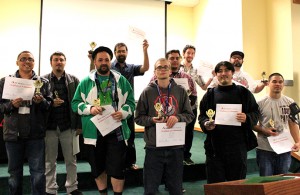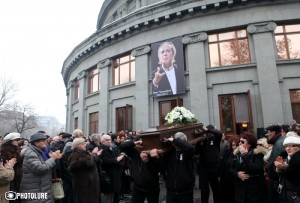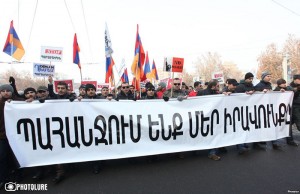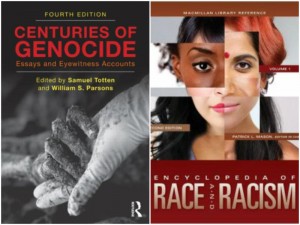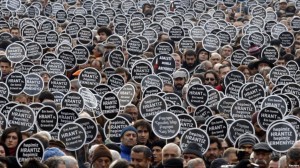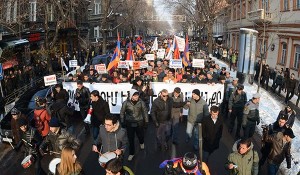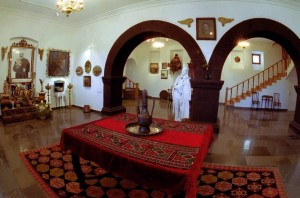By Garen Kazanc
As I approached the Cercle d’Orient amidst the hustle and bustle of the Beyoglu district of today’s Istanbul, I could not help but remind myself what happened there the night of May 21, 1915. It was in this building where Krikor Zohrab was playing cards with Talat Pasha while bargaining the latter to set free those Armenian notables who were apprehended just a month ago and sent to unknown destinations in Anatolia.
That night, Zohrab came to the table with his own cards to play. A skilled negotiator, he sincerely believed that he could haggle his way with Talat and save as many lives as he could, even if that meant his own. After all, there appeared to be a glimmer of hope. Just a week before, Gomidas and others were set free and returned to Constantinople. Zohrab felt that this was a giant breakthrough which he could take advantage of.
After the tense atmosphere subsided, the card session ended unusually early that night. Upon saying their farewells, Talat stood up and unhesitatingly gave Zohrab a kiss on the cheek. “Why such affection?” Zohrab asked. “Oh,” Talat responded with a smile, “I just felt like doing it.”
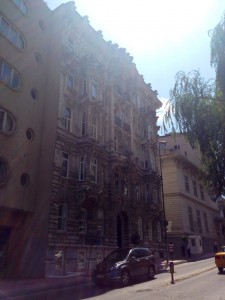 Zohrab’s house
Zohrab’s house
I started the walk from Cercle d’Orient down Rue de Pera (now Istiklal Avenue) to Zohrab’s residence, the same walk he took home that night. I walked slower than usual. My feet were becoming weary and shaking, as though they were weeping in some strange way. I thought about what Zohrab was thinking while walking back home that night, through these streets alone, with the burden of millions of people on his shoulders. Was he confident? Was he confused? No one will ever know. But we know of one thing, the walk home that night, was to be his last.
After walking down the winding road that leads up to the Zohrab family residence, I had a sensation of just running away. I knew that in front of this eloquent building, built by an Italian architect through the commission of Zohrab himself, were guards waiting to arrest him. I had the pleasant opportunity of entering the house. Zohrab, on the other hand, did not.
I took the long flight of stairs leading up to the top floor of the building, and to my surprise, it has now become a hotel. “How may I help you?” asked the receptionist upon seeing me. “I came to see this building,” I responded hesitantly, “it used to be a residence owned by a distant relative of mine.”
Almost instantaneously, the entire staff turned their heads towards me and listened to every word I had to say. Like some sort of magician, I felt as though I was going to unravel a show. I was to talk about a past, much more distant than it actually seemed.
A member of the staff broke the ice, “let us show you around and please, tell us more about your relative,” he said out of sincere curiosity. “Please,” I said, “just take me to the balcony.”
This was the balcony where Zohrab wrote much of his writings. Here, Zohrab would return from his tumultuous daily activities, and concentrate on what he loved most: writing. The Bosphorus, with all its beauty, laid out in front of him, encouraging him, inspiring him.
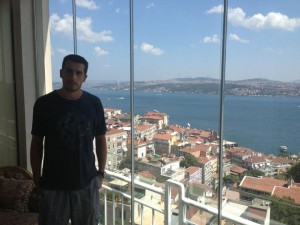 Garen Kazanc on the Zohrab’s balcony
Garen Kazanc on the Zohrab’s balcony
It was this very balcony, which his daughter Dolores yearned for so much, as she wrote in her memoirs, thousands of miles away in exile. With her father killed and her entire family exiled, she wanted nothing else in this world, but to sit on this balcony, next to her father, while he wrote his next short story, and as she enjoys the scenic view.
“Who was he? What’s his name?”
“His name was Krikor Zohrab,” I responded, while gazing fixedly at the scenery.
“What did he do?”
Turning towards him I replied, “He was an engineer, lawyer, professor, journalist, politician, short story writer, philanthropist, husband, and a father of four.”
After much silence, the man appeared to think I was exaggerating. “That’s impressive,” he simply remarked.
“You’re not here to reclaim this property are you?” he asked in a rather serious tone. Amused by his question, “No, heavens no,” I assured him, “this was private property that was sold right before the family fled to Europe.”
“Fled?” he asked cautiously.
“Yes,” I responded briskly, not being in the mood to explain.
The balcony used to be one long stretch, but it is now divided into separate rooms, each having their own piece of the magnificent view. The designers of the hotel did a remarkable job of keeping the original framework of the structure intact. Much of the additions to the building can be easily removed since they aren’t fixated on the walls. Their intentions were to retain as much of the original structural characteristics as possible. I especially thanked them for their attentive efforts.
After taking a few photographs of the view and the balcony, the man invited me to have a cup of tea. I agreed. The rest of the staff also arrived. It happened to be their tea break.
I showed pictures of Krikor Zohrab on my phone and answered their questions about his life and works. Then they asked, “When did he die?” “1915,” I responded. They stood silent, almost ashamed.
I began to wonder, was this the first time that the dreadful year of 1915 was uttered in this building since that very year? I felt like this was an interrogation of some sort. A scene of a murder, where in some odd twist of fate, the murderers were interviewing me.
But no, that was not the case. These were human beings, much like myself, who were curious, curious the same way I was when I first started reading and learning about Zohrab myself. After much discussion, it was time for me to go. I thanked all those that gave me the wonderful tour and provided their delightful hospitality. As I was leaving, I was still awe-inspired by the magnificence of the structure, with its scenic views and elegant design.
Right when I was about to step out of the building, an older man abruptly came over to see me. It was the owner of the hotel, who just so happened to overhear the conversation of the tea session. He looked straight into my eyes, with his hand on my shoulder and said, “I will hang his portrait in the entrance of the hotel with a brief biography.”
When I heard this, I was in complete shock as it was entirely unexpected. Almost automatically I begged, “No, no, you don’t need to.” “Please,” he responded, “it really is the least I can do.” I stood there, with tears in my eyes, and said, “Thank you” and left.
Have they put the portrait up? I don’t know, and quite frankly, I don’t care. Another visitor of the hotel can provide those updates. But this personal experience was neither about the portrait, nor the scenic views. This was about a man, whose influence and power still resonates with us today.
He was a man full of wonder, to say the least, who saw the world not only as a writer, but as a lawyer, politician, professor, and more. I happened to live just one day of his life, but it felt like a lifetime, which reminded me that he is someone we can still learn from, whose skills and talents still amaze us until this day.
Today, his bones remain lost and yet to be found: unfitting for a man of such stature. But that should not matter. He is so awe-inspiring that his influence will be everlasting, much like his short stories, speeches, and residence, with all of its magnificence and splendor as well.
Born in Paris to Armenians from Turkey, Garen Kazanc moved to Los Angeles at a young age, where he attended and graduated from the Armenian Mesrobian School in 2006. He received a B.S.degree in sociology from Cal State Los Angeles. He has been an active member of Hamazkayin and the Armenian Poetry Project.
Revisiting Krikor Zohrab's House

